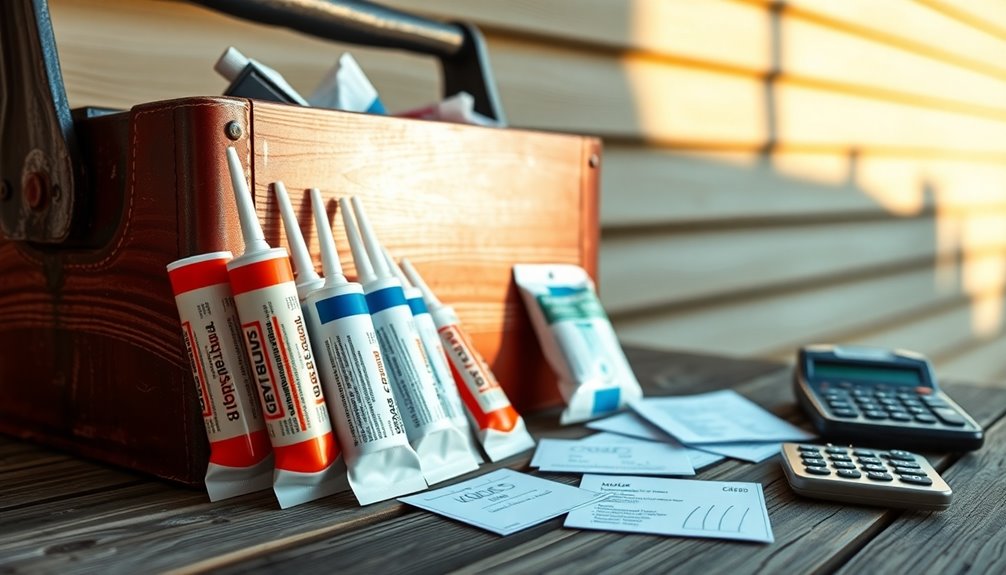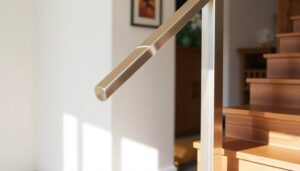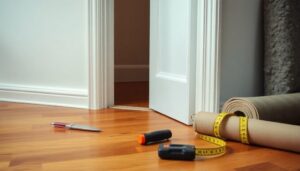To determine how much caulk you need for Hardie siding, first measure the total linear footage of joints and seams. One tube typically covers about 30 linear feet, so divide your total by this number. Don't forget to account for expansion gaps due to temperature changes. It's smart to add 10-15% extra for touch-ups and unforeseen gaps. For budgeting, consider bulk purchases to save costs and track your spending with apps. Choosing high-quality caulk can save you money in the long run. Stick around, and you'll discover even more tips to manage your project effectively.
Understanding Caulking Needs
When it comes to caulking needs for your Hardie siding, understanding the specifics can save you time and money. You'll need to calculate the total length of joints and seams that require caulk, since the standard coverage per caulk tube is about 30 linear feet.
Keep in mind that Hardie siding expands approximately 1/8 inch for every 18 inches due to temperature fluctuations. This means you should account for these gaps when determining how much caulk you need. Expense management apps can help streamline the budgeting process by tracking your caulking expenses, allowing you to manage costs associated with your materials and labor more effectively.
For durable results, choose caulk with high elongation properties—60% or more—so it can accommodate the movement of the siding material.
When budgeting, calculate the number of caulk tubes based on the linear footage of joints caulked, and don't forget to add extra for repairs or touch-ups down the line. Utilizing a reliable expense tracking solution can ensure you stay within your budget while completing your project.
Opt for high-quality, paintable caulk that meets ASTM standards, guaranteeing compatibility and longevity with your Hardie siding. Additionally, using tools like expense tracking tools can help you manage your costs more effectively during the caulking process.
Calculating Coverage per Tube
Calculating the amount of caulk needed for your Hardie siding project starts with measuring the linear footage of all joints and seams that require sealing.
Once you gather that measurement, you can figure out how many tubes of caulk you'll need. A standard tube typically covers about 30 linear feet when applied in a 1/4-inch bead, which is the common size for filling gaps in siding. Budgeting apps simplify tracking expenses related to your project, ensuring you stay within your budget. Additionally, using a budgeting app like Simplifi can help provide a detailed overview of your expenses, making it easier to allocate funds for materials.
To find the total amount of caulk required, simply divide the total linear footage by the coverage per tube. For instance, if you measure 120 linear feet, you'll need four tubes of caulk.
If your project has multiple joints or is particularly large, consider bulk purchases. Buying caulk in larger quantities often reduces costs.
Additionally, always plan for extra caulk. It's wise to add 10-15% to your total estimate to cover any touch-ups or unforeseen gaps that might crop up during the job. Using a budgeting app like YNAB can help you effectively manage your expenses throughout the project.
Choosing the Right Caulk
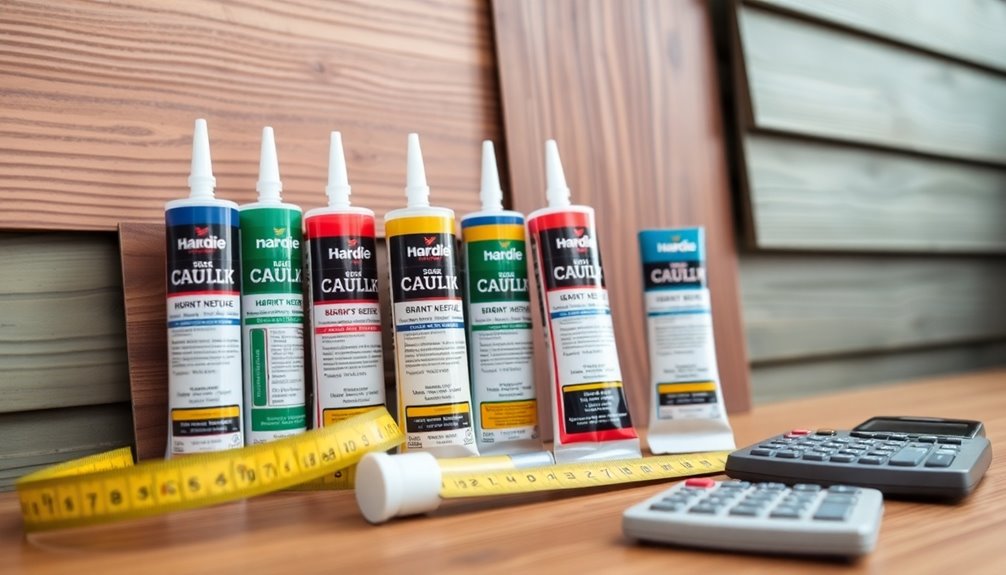
Choosing the right caulk for your Hardie siding project is essential for guaranteeing a lasting and effective seal. Start by selecting caulks specifically designed for fiber cement siding, like OSI Quad or Dap Sidewinder. These options guarantee compatibility and color matching with your Hardie siding, which is important for aesthetics.
Look for sealants that boast high elongation (60% or more) and a memory of 99%. This flexibility allows the caulk to accommodate movement in the joints caused by temperature changes. Always check that the caulking product complies with ASTM C 834 or ASTM C 920 standards to guarantee peak performance and durability. Additionally, supporting eco-friendly stores can enhance your sustainable construction practices by promoting responsibly sourced materials. By choosing sustainable products, you can also support socially responsible economies, fostering a positive impact on communities.
Consider using polyurethane caulk, such as Sherwin Williams Lockon H1. It offers superior durability and can be painted within 24 hours, making it a practical choice for your project.
Finally, prioritize caulks that remain permanently flexible to prevent cracking and splitting over time due to environmental stressors. By making these informed choices, you'll help guarantee that the joints in your Hardie siding remain sealed and protected for years to come. Additionally, choosing eco-friendly materials and practices can contribute to sustainable fashion and construction, promoting a healthier environment.
Estimating Project Costs
Estimating project costs for caulking your Hardie siding involves a few straightforward steps to guarantee you have enough material without overspending.
Start by calculating the total linear footage of all joints and gaps, including butt joints, which can greatly affect your total. Typically, one tube of caulk covers about 30 linear feet with a 1/4-inch bead size. Utilizing coupon codes can help you save on purchasing materials, ensuring you maximize your budget. Additionally, using bill tracking apps can assist in monitoring your overall expenses during the project.
Next, consider factors like joint width and spacing, as well as the number of corners and seams, which will influence the total linear footage needed. Once you have your initial estimate, add 10-20% extra to account for mistakes or reapplications.
Now, factor in the cost of high-quality caulking materials, which typically range from $5 to $15 per tube. Multiply the number of tubes needed by the price per tube to get your overall budget. Tracking expenses effectively can help ensure you stay within your budget.
Always remember to check the manufacturer's guidelines for any specific caulking recommendations related to Hardie siding, ensuring you meet compliance and achieve ideal performance.
Tips for Efficient Application
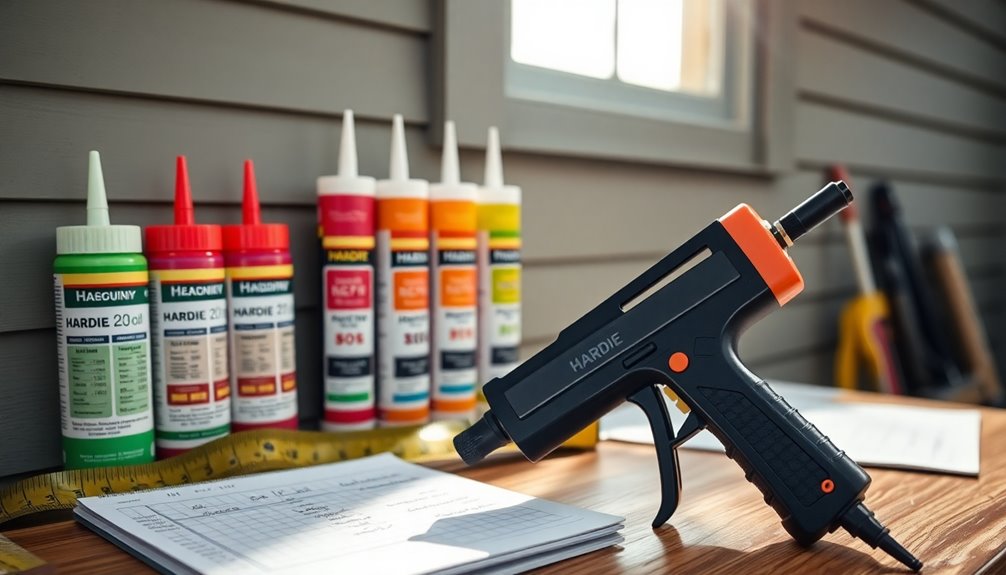
To achieve the best results when applying caulk to your Hardie siding, it's essential to maintain a steady hand and a consistent technique.
Start by calculating the total linear footage of joints needing caulk. For every 30 linear feet, you'll need about one tube of caulk. Don't forget to factor in extra caulk for any repairs or gaps, as this can affect your overall estimate. Budgeting for these materials ahead of time can help you manage overall project costs effectively. Additionally, utilizing data-driven insights can lead to more informed decisions regarding the types of caulk to purchase based on performance reviews.
Choosing a high-quality caulking product, like Sherwin Williams Lockon H1 polyurethane, can greatly improve your results. These products offer superior adhesion and flexibility, which means you might use less caulk overall.
When applying, aim for a continuous bead to minimize waste and guarantee even coverage. This will also help reduce the number of applications you need.
Keep your workspace clean and have rags on hand to manage any excess caulk. This prevents spills and keeps your project looking neat. Additionally, understanding the importance of tracking progress can help you stay organized and ensure you have enough materials for your project.
Maintenance and Reapplication Considerations
Regular caulk maintenance is crucial for preserving the integrity of your Hardie siding. To guarantee peak performance, conduct inspections of caulked joints every 6 to 12 months.
Look for signs of cracking or deterioration, as these issues can lead to moisture intrusion if left unaddressed. Depending on your local climate, you may need to reapply caulk every 5 to 10 years, especially in areas prone to extreme weather.
When it's time to reapply, make sure you completely remove all old caulk and clean the surfaces thoroughly. This step is essential for promoting maximum adhesion of the new product.
For the best results, choose high-quality, paintable caulk that meets ASTM C 834 or ASTM C 920 standards. These products offer the durability and flexibility needed to withstand changing conditions.
Conclusion
In summary, understanding your caulking needs for Hardie siding is essential for a successful project. By calculating coverage per tube and selecting the right caulk, you can avoid any costly surprises. With proper application techniques and regular maintenance, your siding will remain as flawless as a Hollywood star's complexion. So, gear up, and tackle your project with confidence—your home deserves nothing less than perfection!

